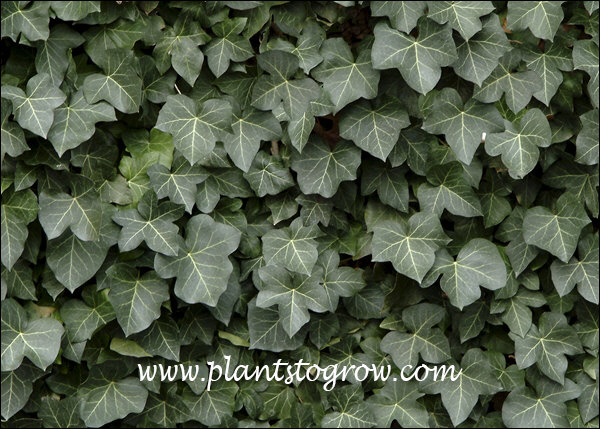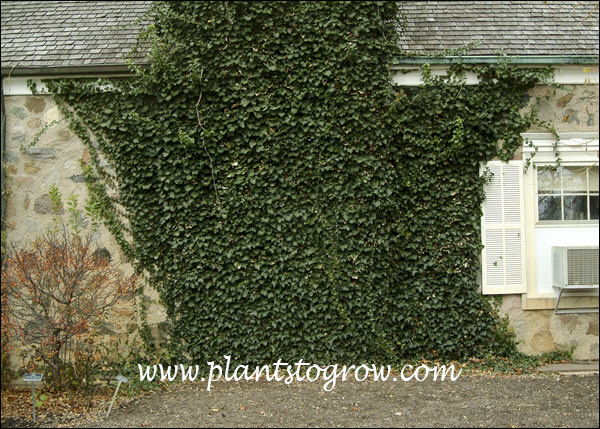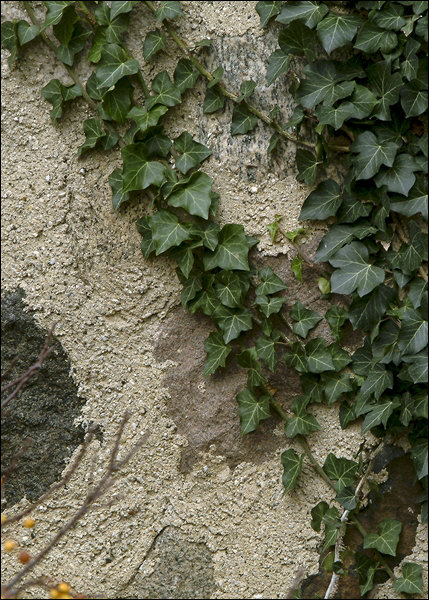| Description | A hardy form of the English Ivy. Clings to rough surfaces by adventitious roots growing from the stem. |
|---|---|
| Pronunciation | (HEAD-er-ah)(HEE-licks) |
| Plant Type | All Plants, Vines |
| Hardiness Zone | 5 |
| Sunlight | grows best in shade or half day of light (morning) |
| Moisture | prefers moist tolerates average to dry once established |
| Soil & Site | tolerates a wide range, prefers moist, rich well drained slightly acidic |
| Flowers | occurs on mature plants, not showy, pale green |
| Leaves | glossy dark green, paler on underside, whitish veins, 3-5 lobes |
| Roots | fiborsis, adventitious roots can occur at nodes, used to attach to strutures |
| Propagation | cuttings |
| Cultivar Origin | Baltic Ivy was discovered by Alfred Rehder in Russia He found it growing as a ground cover in the pine woods near Riga, Latvia . This area is cold and outside of the known hardiness of this plant. Collected around 1907.(Aronold Arboretum, UM Harvard University Bulletin Series 3, Vol 6, 3-29-1932) |
| Misc Facts | Can be invasive especially in warmer climates. |
| Notes & Reference | #62-Manual of Climbers and Wall Plants (Burras, Griffiths), #68-Groundcovers for the Midwest (Voight,Hamilton,Giles) |

Cart



